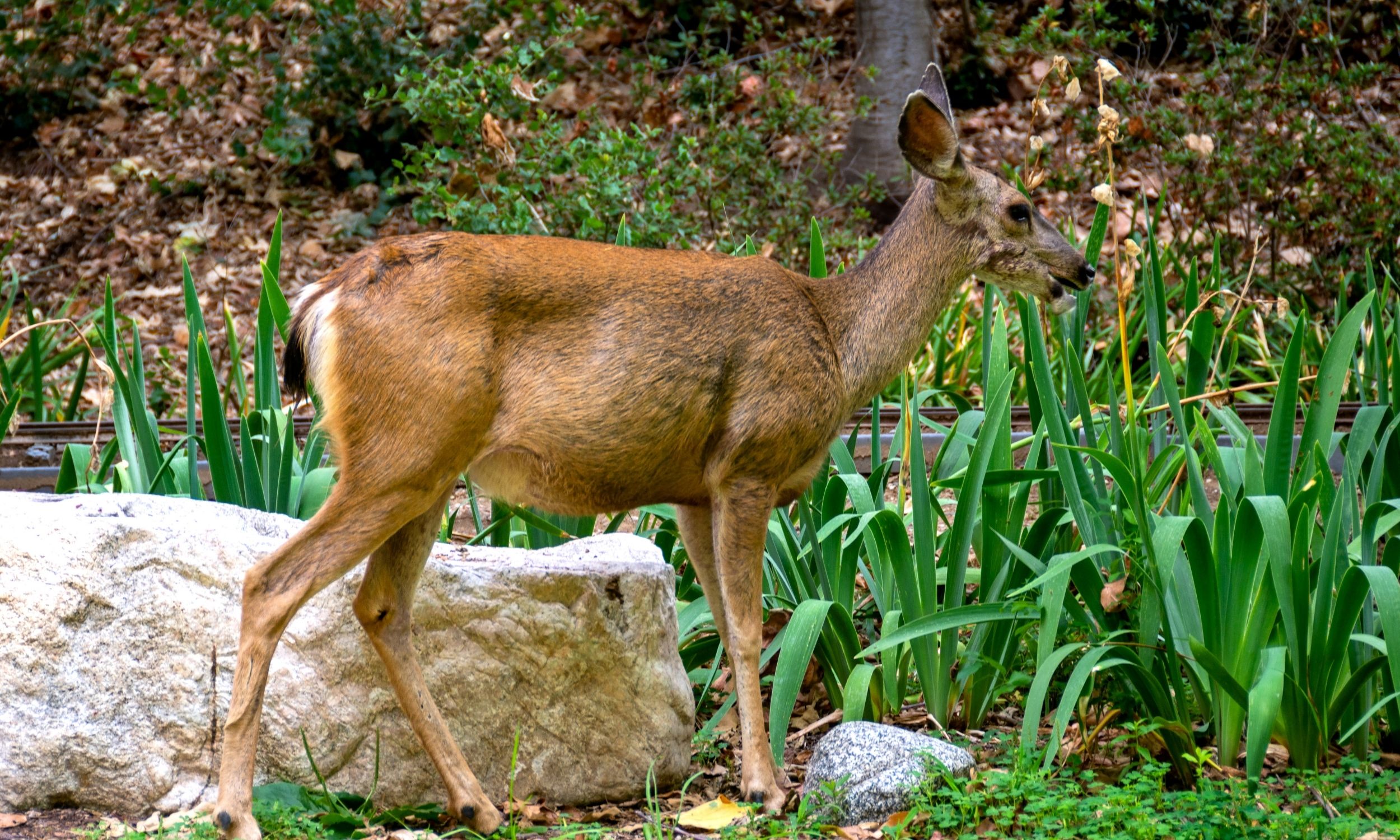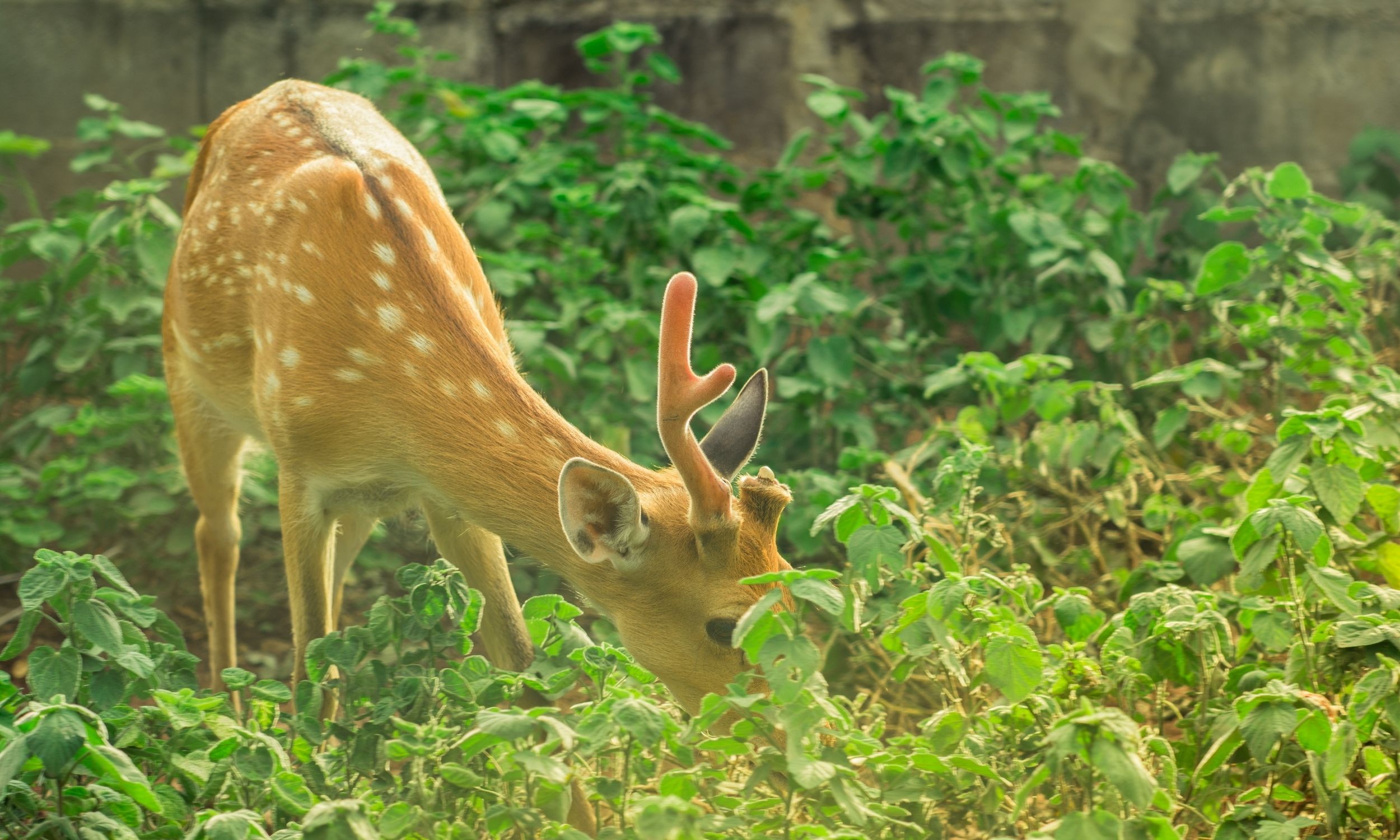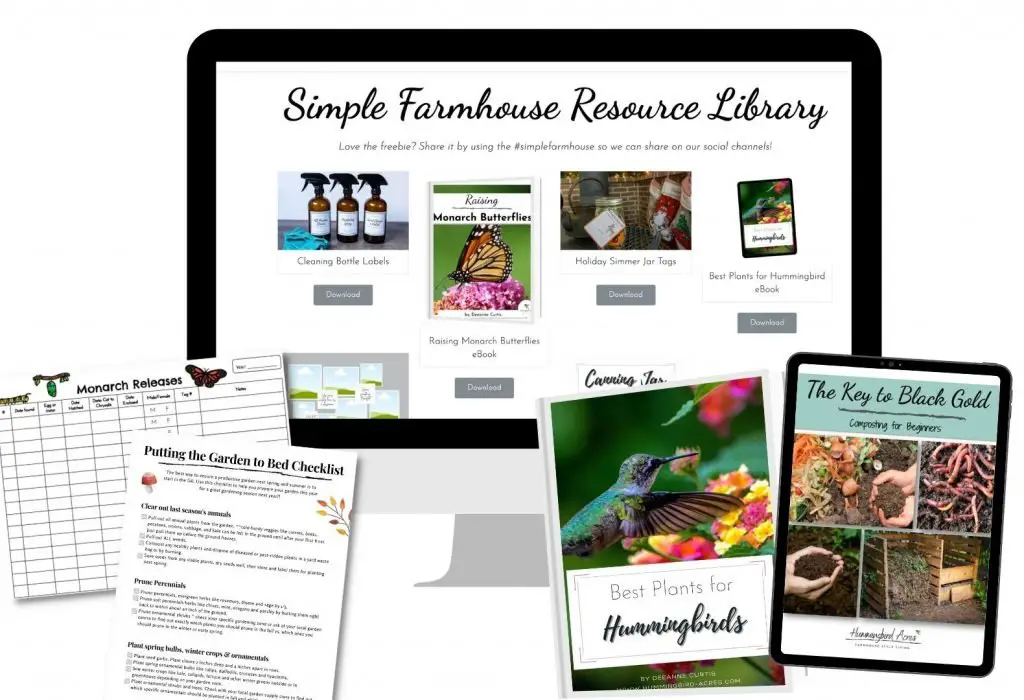Deer Resistant Perennials for Your Yard
Deer can turn a beautiful landscape into an unattractive garden of chomped stems and damaged trees overnight. But before you resort to pungent chemical and obtrusive fencing, consider deer resistant perennials and strategic design choices that reroute deer from their favorite plants. By relying on plants that deer won’t eat and employing a few design techniques, it’s possible to prevent your garden from becoming a buffet for the deer.
By choosing deer-resistant perennials and other plants, you’ve already done a great deal to deter deer from your garden. They may nibble on some plants to sample them, cut once they get a taste, they will likely leave them alone. Here are seven native perennials that deer seldom browse; hardy ageratum, false indigo, penstemon, butterfly weed, anise hyssop, spike blazing star, and joe-pye weed.
While no plant is completely deer resistant, our four-legged friends tend to shy away from plants that feature such unpalatable characteristics as bitter flavor, thorny stems, strong scent, or unappealing texture.
Are you looking for more deer resistant perennials for your yard, scroll down, you are bound to find a few that you can add to your landscape.
Disclosure: Some of the links below are affiliate links, meaning, at no additional cost to you, I will earn a commission if you click through and make a purchase.
Deer Resistant Perennials
Hardy ageratum
The purple stems of hardy ageratum are topped with masses of fuzzy flowers that attract native pollinators but deer tend to avoid.
False indigo
This long-lived native beauty is a spring-bloomer that deer will pass right by without nibbling. False indigo is drought-tolerant once established.
Penstemon
There are dozens of types of penstemon and all of them are tough-as-nails, drought-tolerant and highly resistant to browsing by deer.
Butterfly weed
Easy-care and drought-tolerant, native butterfly weed is a host plant for the monarch butterfly. Deer tend to steer clear of all milkweeds.
Learn More about Milkweed and the Monarch Butterfly – HERE!!
Anise hyssop
The foliage of this native member of the mint family is highly aromatic (the scent is reminiscent of licorice), which deer find distasteful.
Spike blazing star
The grasslike foliage and spiky blossoms of this prairie native attract bees, birds and butterflies but deer will simply stroll right by.
Joe-pye weed
Both the foliage and the frothy crowns of vanilla-scented flowers of this native plant are unpalatable to deer and rabbits. Get seeds HERE.

Deer Resistant Flowers
French Marigold
French marigolds come in an array of bright colors over a long season and are a mainstay of gardeners everywhere. They are bushy and compact with small flowers and a neat overall appearance that feature multiple colors in a single flower head.
Foxglove
Foxglove plants are classified as biennial since their leaves form rosette close to ground first year, succeeded by spike with blooms second. Tall, slender and with numerous tubular flowers on spikes, ranging in color from purple to white.
Rosemary
Rosemary is an herb that makes a beautiful ornamental plant as well as a welcome culinary seasoning. It is most closely associated with Mediterranean cuisine. It is easy to grow; in fact, rosemary can suffer from too much attention.
Mint
Despite the name and some online reviews, chocolate peppermint doesn’t taste or smell strongly like chocolate. It bears more resemblance to chocolate after-dinner mint—a hint of chocolate and mint. Use leaves fresh or dried to flavor water or tea. The flavor is best when leaves are harvested before the plant flowers.
African Lily
Agapanthus Headbourne hybrids, or African lily, bear large drumstick heads of flowers from midsummer on. They can be grown in a pot or tub. Attractive to butterflies and features flowers in a range of light and dark blue shades.
Fountain Grass
Deer tend to avoid this perennial grass.
Hens and Chicks
Sempervivum tectorum, also known as hens and chicks, are ornamental succulents that will tolerate shade and sun.
‘Dwarf Marine’ Heliotrope
Heliotrope has a sweet, pungent scent that some liken to the smell of cherry pie. ‘Dwarf Marine’ features a royal purple color. It is large flowered yet compact and has attractive, dark green foliage and a bushy habit.
Heather
When heathers are planted in giant swathes that they really look breathtaking. Flowers appear at different times of the year depending on the species, so it is possible to get flowers for most of the year if different types are planted.
Yucca
This flowering plant is not a favorite item on the deer menu: its sharp, spiky fronds tend to keep deer from munching in many — though not all — cases. Prickly agave can also keep deer from making your yard an all-you-can-eat buffet.
Zinnia
Zinnias come in a wide variety of colors with large, profuse blooms. They are truly an easy-to-grow annual flower. Zinnia offers many colors and mixed blooms from which to choose.
Brunnera
‘Dawson’s White’ brunnera has flowers appearing in spring that are bright blue. The “white” in the name refers to the leaf edges.
Wisteria
Plant Wisteria floribunda if you don’t want deer to nibble.
Sea Holly
Eryngium x tripartitum, or sea holly, has blue-green stems with masses of small metallic blue flower heads on tall four-foot stems. Sea holly is a delight to butterflies and flower arrangers alike and is a tough plant that is very tolerant of drought.
Verbena
Deer-resistant plants often feature a texture or smell the animals try to avoid.
Sweet Woodruff
This shade-friendly groundcover with fragrant white flowers is sweet but not sweet for deer.
Catmint
An excellent companion bloom, versatile catmint gets along famously with its neighbors. Catmint complements almost any garden style, whether you’ve got a formal parterre with hybrid tea roses or a wild swath of prairie perennials. It starts blooming lavender blue late in spring and keeps going till frost — and the foliage smells heavenly when you brush past it.
Lily of the Valley
Lily of the Valley is an old-fashioned perennial that looks so delicate with its tiny bell-shaped flowers. It will grow in the deep shade of large trees and shrubs and makes a good choice for small, contained spaces.
Bee Balm
This beautiful perennial attracts hummingbirds and butterflies but not deer.
Daffodils
Plant daffodils in your garden and you will let the deer know the buffet is closed in your yard.

Deer Resistant Shrubs
Crape Myrtle
Crape myrtle is not typically bothered by deer in yards and gardens.
Join the Simple Farmhouse Resource Library
Labels | Recipes | Guides | And MORE!!!

Deer Proofing Tips
- Plant in drifts. Grow plants that deer avoid in large numbers. Don’t just buy one or two; purchase enough that you can plant in drifts, creating a natural barrier. It’s inevitable that deer will do some browsing, but they won’t get to all the plants in a large grouping.
- Plant toxic plants. Plants like daffodils and hellebores are toxic and contain compounds that are poisonous to deer.
- Use ferns, grasses and sedges. Intersperse your plantings with ornamental grasses or sedges like the maidenhair grass and leatherleaf sedge.
- Plant ornamental herbs. Since deer rely on their sense of smell to find food, you can hide some of their favorites by using strong-smelling plants to surround those most delectable to deer. Deer tend to avoid most herbs – plants typically in the mint family – or strongly aromatic plants like pairing of bee balm and yarrow.
- Startle them. Deer are often frightened away by loud noises and sudden movement. Keep them on edge by hanging wind chimes from the branches of trees and shrubs or by placing wind spinners throughout your garden. If that doesn’t work, try startling them with a sudden spray of water by installing a motion-activated sprinkler.
- Use other plants to deter them. Interplant aromatic perennial herbs throughout your garden that have scents that deer hate, such as mint, thyme, French tarragon, lavender, chives, sage, and rosemary.
- Repel and fertilize. Deer love the tender new leaves and shoots of groundcovers when they first emerge in the spring. To eliminate the temptation, treat the area with a strong-smelling deer repellent or something that also doubles as a chemical-free fertilizer, such as blood meal or fish emulsion. “Be careful not to overfertilize, which will result in the soft, succulent vegetative growth that deer love. Just half the recommended dosage at a given time will leave the odor but not overstimulate the plants,” advises Clausen.
- Plant higher. You don’t have to avoid growing all the annuals that deer like to nibble on. Instead, put them in containers on a balcony or front porch or plant them in hanging baskets that are too high for deer to reach. You can also try a deer-resistant wildflower mix.
- Fence it in. If all else fails, surround your garden with tall deer fencing or other impenetrable barrier. Learn how to build your own “Critter-Resistant Vegetable Garden”.
Remember there are no guarantees: if deer are sufficiently hungry they will eat even “unpalatable” plants. It pays to be strategic with plant selection to keep deer damage to a minimum.
